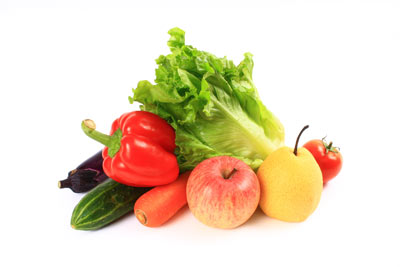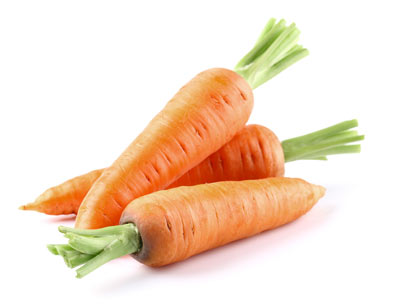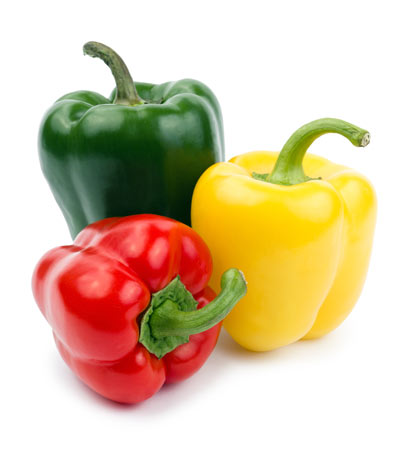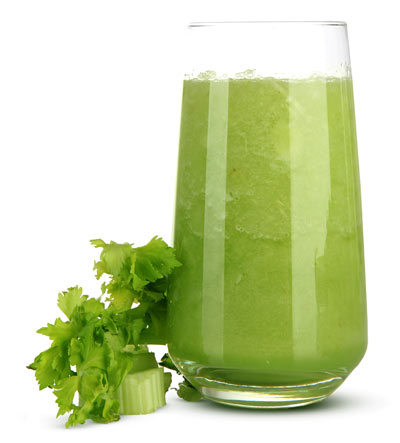
When you think of juice, you probably recall the sugar-sweetened juice boxes of your childhood. You know, the ones that came in various vibrant colors with the straw you could never quite get through the little hole.
And although there’s nothing wrong with enjoying a little nostalgia (who hasn’t swiped a few sips from their child’s Juicy Juice?), the adult version of juicing is somewhat different—and healthier!
There are many reasons why you might be skeptical of juicing. Perhaps the thought of eagerly slurping something that resembles a liquid salad isn’t all that appealing to you, or maybe you don’t feel “healthy enough” to be a juicer. But if you’ve ever considered it or are just curious to see what all of the hubbub is about, then read on! The next few pages will tell you everything you need to know about drinking your fruits and veggies, how to get started, what to expect, recipes and more!
Just What Is “Juicing?”
Let’s start at the very beginning. “Juicing” refers to extracting the juice from fruits and vegetables via the use of a juicer. The end result is a liquid or “juice” rich in vitamins, minerals, antioxidants and enzymes. The leftover fibrous pulp can be discarded or used in various other ways.
You may be asking yourself, “Can’t I just eat the whole fruit or veggie and be just as healthy?” The answer is yes, but how many times a day are you realistically going to sit down to a plate of kale, cucumbers, carrots, cabbage, an apple, berries, a pear… (see where this is going?)
“You can drink a lot more in one sitting than you can eat,” explains certified health coach Claudia Pache. She and her partner, fellow juicing enthusiast Julie Healy-Vaden, are well-versed in the juicing field and provide a number of services through their company, Healthier By The Minute, for those looking to take their health up a notch.
She explains that juices are highly concentrated. When the fiber is taken out of the equation, your body doesn’t have to work as hard to digest the nutrients. Rather, they are immediately absorbed into the bloodstream.
Julie also points out that juices are excellent methods to experiment with new fruits and veggies.
“You’re more motivated to try other produce because you can mask the flavor,” she says. Kale is a perfect example. “It’s bitter alone, but in a juice, it can easily be masked with some fruit,” she says.

What Does It Taste Like?
One of the first questions people often ask is, “What does it taste like?” This is especially true when the juice is radiating a vibrant green glow. Ask any avid juicer though and you would be surprised to find that most juices are quite flavorful.
“You have to come in with an open mind,” says Julie. “You have to get over that ‘yuck’ factor,” she says, knowing that most people are quick to turn up their noses at vegetable juices… especially the green ones.
But fresh juices are often invigorating. Claudia explains that they supply an energy rush because of the rapid nutrient absorption.
Some of the best options for beginners are cucumbers or celery as a base with milder greens like spinach or Romaine lettuce to start out.
“California carrots are excellent and add lots of sweetness,” says Julie. She and Claudia say including fruits to juices definitely adds plenty of flavor but also plenty of sugar.
“Depending on your goals, you can select what you would like to juice. If weight loss is a goal, you’ll want to add more vegetables and fewer fruits,” explains Paula. She also notes that as people become familiar with certain flavors, they often begin to experiment with different ingredients, including herbs like cilantro and parsley.
How Do I Get Started?
Once you’ve decided you’d like to give it a try, there are a few tips to keep in mind in order to become a successful juicer.
1. Make it a habit.
“Don’t approach this as the latest fad,” says Julie. “Do this because you want to be healthy,” she says, noting that many people turn to juicing as a quick fix when it should be a lifestyle habit.
2. Buy the equipment that works best for you.
“There are juicers out there for a few thousand dollars, and there are juicers you can buy at Walmart,” says Julie. Both she and Claudia agree that the best juicer for you is the one you will actually use. “It may be the best juicer on the market, but if you don’t like it, you won’t use it,” says Julie. Claudia adds, “Don’t break the bank; most juicers are very efficient these days, and extracting 70 percent of the nutrients with a more affordable, easy-to-use juicer is better than extracting none.”
3. Juicing doesn’t have to be expensive.
“Yes, juicing organic is ideal, but I’d rather see people buy conventional produce than none at all,” says Claudia. A good rule of thumb is to pay attention to the Environmental Working Group’s list of the “Dirty Dozen” and “Clean 15” when it comes to deciding where to invest your money in organics.
4. Juicing doesn’t have to be time consuming.
It doesn’t matter if you have the best juicer on the market, juicing takes some time. Some of the time-saving tips Claudia and Julie suggest are freezing a batch of juice for the week or pre-chopping all your produce the night before. “You can absolutely freeze it in canning jars or ice cube trays,” explains Julie. Both she and Claudia are busy mothers who have developed several time-saving techniques.
5. Juicing doesn’t just have to be a grown-up thing.
“Kids are automatically going to be stubborn,” says Julie, noting that the same holds true for many adults as well. But both her own and Claudia’s children are avid juicers. “Sometimes you just have to sneak it in a little,” she says, explaining that you can add in a little kale to something sweet like a pineapple quite successfully. She and Claudia note it’s important to incorporate the kids into the process. Involve them in the shopping, and let them help prepare the fruits and veggies. “Smoothies are always an option for kids or beginners, too,” says Claudia.“Sometimes the texture is more appealing.”
Ready To Jump In?
There’s no doubt about it, juicing is a healthy addition to any diet. Whether you are looking to lose weight, boost your immune system, battle a disease or supplement your diet with more fruits and veggies, juicing can help you achieve these goals.
Still skeptical? Test out a juice or two before you commit. Julie and Claudia host several juicing seminars throughout the year, and plenty of information is available on their website, healthierbytheminute.com. You can also visit the juice bar at Vitalize Nutrition or Earth Origins where fresh juices are made daily. If you’re like most people, you’ll be hooked on the first sip!
Recipe Corner
Try out some of these recipes courtesy of Healthier By The Minute.

The Refreshed Carrot
Juicer type: Centrifugal or auger juicer
3 servings (approx. 12 ounces each)
10 large California carrots
3 large limes or 7 small key limes
3 pears, stems removed
Juice all ingredients and enjoy!

Walking On Sunshine
Juicer Type: Centrifugal or auger juicer
4 carrots
2-3 sweet peppers or 1 whole red, yellow or orange pepper
1 orange (peeled)
Juice orange, pepper and then carrots. Serve over ice and enjoy!
Tip: If making a smoothie with this or using a NutriBullet or blender-type juicer, only use 1/4 to 1/2 of a pepper or you will taste more pepper than carrots or orange.

Green Morning Smoothie
Juicer Type: Blending
1 cup water
Large handful of greens (your choice)
1 stalk celery
¼ – ½ cup berries
½ banana
3-5 drops liquid vanilla stevia
Add the water and spinach to the blender. Mix until smooth. Add the remaining ingredients, and mix.






